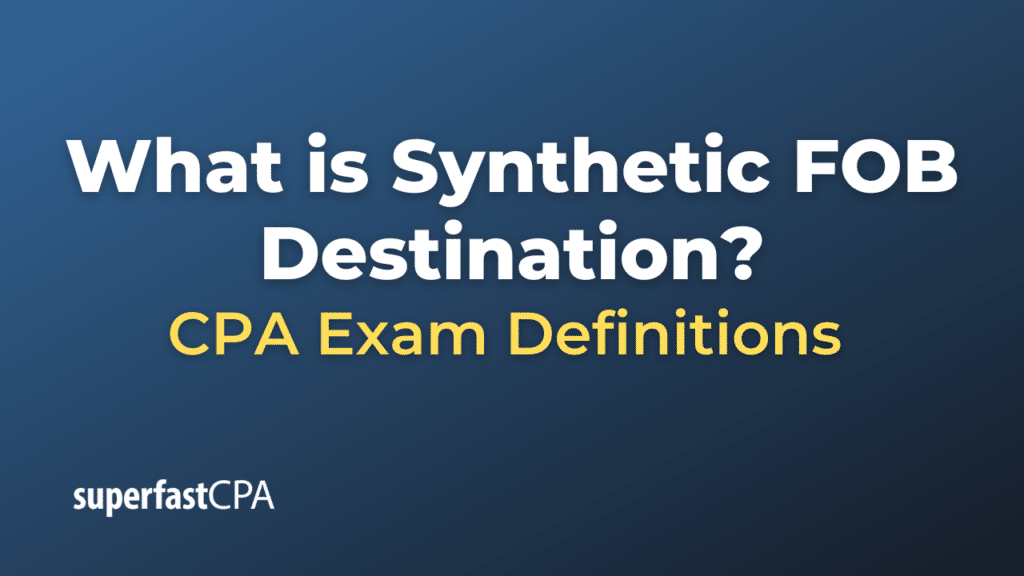Synthetic FOB Destination
“Synthetic FOB (Free On Board) Destination” is a combination of terms used in shipping and freight. The term blends aspects of “FOB Shipping Point” and “FOB Destination” to create an arrangement that seeks to benefit both the buyer and the seller.
In a standard FOB Destination agreement:
- The seller retains ownership and responsibility for goods during transportation. This means the seller bears the freight costs and the risk of transportation.
- Ownership of the goods is transferred to the buyer only when the goods arrive at the buyer’s location.
However, in a Synthetic FOB Destination agreement:
- The seller invoices the buyer when the goods leave the seller’s premises (like FOB Shipping Point).
- The buyer pays the freight charges.
- The seller retains the title (and thus the risk) until the goods reach their destination, at which point the title is transferred to the buyer.
The main advantage of this arrangement is that it combines the favorable cash flow dynamics of FOB Shipping Point (the seller gets paid sooner) with the risk dynamics of FOB Destination (the seller retains the risk until the goods are delivered).
For example, consider a manufacturer selling large machinery to a buyer located several states away. Using Synthetic FOB Destination, the manufacturer could invoice the buyer as soon as the machinery leaves its premises. The buyer would then pay the freight charges. However, if the machinery is damaged in transit, the manufacturer would be responsible since they still hold the title until delivery is complete.
Example of Synthetic FOB Destination
Let’s look at a hypothetical scenario to better understand “Synthetic FOB Destination.”
Scenario: WidgetCo and BuyMart
WidgetCo, a manufacturer of premium kitchen gadgets, enters into a sales agreement with BuyMart, a nationwide retail chain. The agreement stipulates a Synthetic FOB Destination arrangement.
Details:
- Order Placement: BuyMart places an order for 10,000 premium blenders.
- Shipment Preparation: WidgetCo prepares the order for shipment. The goods are packaged, and the transportation is arranged.
- Invoice Issued: As soon as the blenders leave WidgetCo’s warehouse, WidgetCo issues an invoice to BuyMart for the 10,000 blenders, even though the blenders have not yet reached BuyMart’s distribution center.
- Freight Payment: BuyMart is responsible for paying the freight charges directly to the shipping company. This was agreed upon as part of their Synthetic FOB Destination arrangement.
- Transit: During transportation, a road accident occurs, damaging half the shipment of blenders.
- Risk and Ownership: Since the title hasn’t transferred to BuyMart yet (because of the FOB Destination component of the agreement), WidgetCo bears the risk of the accident. WidgetCo is responsible for either replacing the damaged blenders or compensating BuyMart for the loss.
- Delivery and Title Transfer: The remaining undamaged blenders reach BuyMart’s distribution center. At this point, ownership of the blenders transfers from WidgetCo to BuyMart.
Benefits for WidgetCo:
- Improved cash flow since they invoice BuyMart as soon as the products leave the warehouse.
Benefits for BuyMart:
- They don’t bear the risk of transportation. If anything happens during transit, it’s WidgetCo’s responsibility.
This scenario showcases how Synthetic FOB Destination can offer unique advantages to both the seller (WidgetCo) and the buyer (BuyMart), combining elements of both FOB Shipping Point and FOB Destination.













